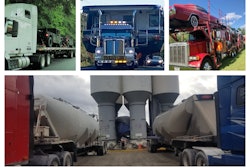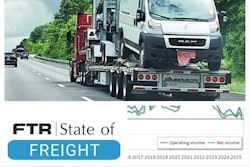In recent decades, many carriers have bucked tradition by offering owner-operators a choice of pay packages. It’s typically either a company-dispatched mileage-pay program or a percentage-pay program in which owner-operator self-dispatch offers greater operational latitude.
An owner-operator running on percentage shares the brunt of market conditions with the carrier, earning less money in bad times, whereas a mileage program in such times might be an attractive safety net, as long as the freight lasts. In an environment with rates rising steadily, operators on a percentage program can benefit with a sort of built-in pay raise without running more miles.
Those who excel in percentage pay shift their focus generally speaking, too -- from weekly mileage targets to revenue targets, ideally achieved on the fewest possible miles.
[Related: A plan for better business: Why do you want to be an owner-operator?]
Percentage pay has risen to predominance over many years as the No. 1 compensation structure for owner-operators leased to motor carriers. As many as 8 in every 10 leased owner-operators in Overdrive’s audience are paid on a percentage model, judging by the results of ou most recent compensation survey of owner-operators leased and with authority, small fleets and company drivers.

It hasn’t always been that way. For about 20 years following 1980s deregulation of pricing in freight markets, miles pay rose in prominence, given the shock of the post-deregulation rates freefall. The “guaranteed” aspect of miles pay appealed to those who were looking for more predictable income in a market they no longer understood.
That’s the thing about percentage pay -- those who excel under it have the ability negotiate their rates with carrier agents or otherwise at the very least exercise load choice to capitalize on local markets where they know supply/demand metrics favor them. There’s plenty evidence that more owner-operators are putting that market knowledge into practice.
Real-time market knowledge is a much easier prospect for self-employed owner-operators and trucking entrepreneurs who would build fleets in contracts with owner-ops. The easy access to information about rates along lanes and out of specific markets may be driving trucking to more percentage-pay programs, but always keep the downside in mind.
In such a program, there’s no safety net when rates inevitably drop. Any owner or even company driver newly participating in such a program should save aggressively for that rainy day.
Read next: Trucking self-dispatch: How to get comfortable, and master the process










